The national symbols of any country introduce the history and geography of that country. National symbols indicate power and pride. For example, during the freedom movement, it can be seen how people were inspired by national songs and national anthem.
National Emblems and Signs of India
India also has many national symbols. The same symbols are explained further. Those symbols are the following: -
National bird of India
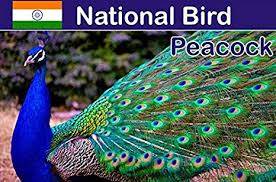
Peacock is the national bird of India. In 1963, it was decided that the peacock would be made the national bird of India. Peacock is an exclusive part of Indian culture and nature.
One reason for choosing peacock was that peacock is found in every part of India. The peacock was also not adopted as a national bird by any other nation, hence the peacock was perfectly suited to make a national bird.
National Animal of India
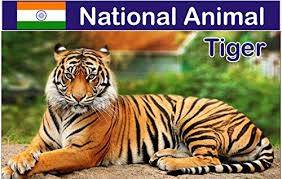
The national animal of India is a striped tiger. The tiger is known for its speed and beauty. In India, tigers are mainly found in Gujarat and Bengal, although they both belong to different species. Bengali tigers were declared national animals during April 1973.
This was done under the scheme of conservation of tigers. The intention behind this is to make people aware. The structure of these tigers is very beautiful. They are yellow in color and have black stripes like zebra on their body, which gives them royal beauty.
National Anthem of india

"Jana, gana, mana" is the national anthem of India. Rabindranath Tagore has written the National Anthem of India. Its first version was written in Bengali and later it was re-written in Hindi.
On January 24, 1950, "Jana, Gana, Mana" was declared the national anthem of India. It is worth mentioning that earlier, "Vande Mataram" was to be replaced with the national anthem, but after much opposition from non-Hindu organizations, "Jana Gana Mana" was chosen.
National flower of India
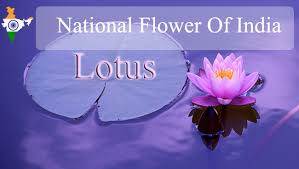
The national flower of India is lotus. Lotus is very important in the mythological beliefs of India. The lotus is considered the flower of Goddess Lakshmi. The lotus blooms naturally in the mud, due to which it is considered a source of inspiration.
National fruit of India
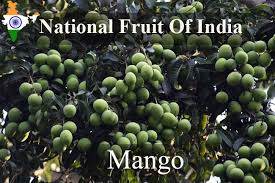
The national fruit of India is mango. Mango is the most liked fruit in India. Mangoes are eaten with great fervor from modern India to ancient India. Many Indian poets have also written historical poems on mango. Emperor Akbar was also a mango lover. He planted more than 1 lakh mango trees in Darbhanga district of Bihar.
National song of india
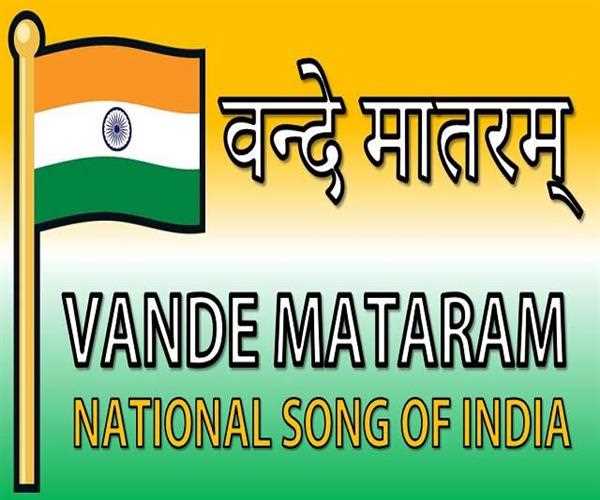
"Vande Mataram" is the national song of India. It was written by Bankim Chandra Chatterjee. Before independence, it was heard as a song of inspiration among the agitators. On 24 January 1950 it was declared the national song of India.
National flag of india
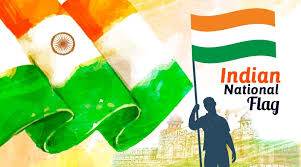
The national flag of India is rectangular and consists of three colors. These three colors are Kesariya, White and Green. The Ashoka Chakra has been installed in the middle of the national flag. On 22 July 1947 it was declared the national flag during a Constituent Assembly. The national flag of India is also called the tricolor. It was produced by Pingali Venkayya.
National sport of india

Hockey is India's national game. Currently, cricket is the most popular sport in India, but at the time when hockey was declared the most national sport, hockey was the most popular sport in India.
It is to be noted that at the same time the best phase of hockey was also going on and India won 6 consecutive Olympic medals in hockey. India played a total of 24 Olympic matches in that period and all won.
National tree of India

The national tree of India is a banyan tree. It is said that bergad inspires to be elaborate and shady. The baragad provides protection to a wide variety of animals and birds from the selfless spirit. The aim behind making the Banyan tree a national tree was that all the citizens of the country should work for the sake of the country with unity and selfless spirit.
National Emblem of India

The Ashoka sign is the national emblem of India. In this symbol, four Asiatic lions are engraved looking in all directions. This sign used to signify the power and bravery of the Ashoka Empire, and this is what the symbol now does for India.
Elephant, horse, ox and lion can be seen depending on the symbol. All these are separated by wheels which shows the continuous development of India. This symbol is installed on a lotus flower.
National River of India
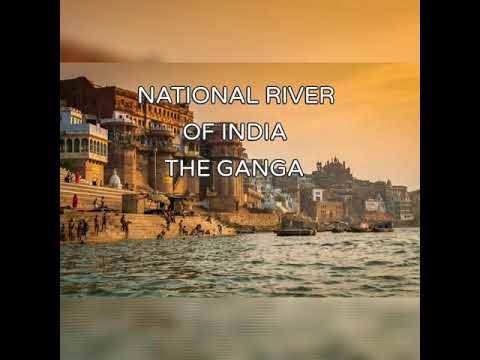
The national river of India is the Ganges. The Ganges is one of the oldest rivers in the world. The Ganges is the largest river in India and Indian citizens have a special reverence for the Ganges. Cities like Varanasi, Allahabad and Haridwar are located on the banks of the Ganges.
The Ganges, originating from the Himalayan Mountains and passing through valleys, fields and many cities, is absorbed into the Bay of Bengal. During this, the Ganges flows a total of 2510 kilometers.
National currency of india
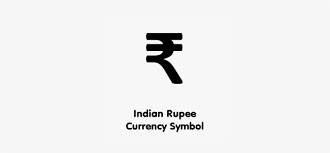
The national currency of India is Rupee. Significantly, the rupee in India is controlled by the Reserve Bank of India. The name of Indian currency is based on rupee, silver coins. The rupee was first applied to his empire by Sher Shah Suri.
India's "National Heritage Animal"
<img src="data:image/jpeg;base64,/9j/4AAQSkZJRgABAQAAAQABAAD/2wCEAAkGBxMTEhUTExMWFRUVGSAbGBgYGCAgGxseIB8eGBobHh8bHSggHx8lGyAYIjEhJikrLi4uHx8zODMsNygtLisBCgoKDg0OGxAQGy0mICYtLS8tLzUuKy0tLS8tMi0tLy0tLS0tLS0wLy0tLS0vLS0tLS0tLS01LS0tLS0tLS0tLf/AABEIAKgBLQMBIgACEQEDEQH/xAAcAAACAwEBAQEAAAAAAAAAAAAFBgMEBwIAAQj/xABSEAACAQIEAwQGBQYIDAYDAQABAhEDBAASITEFBkETIlFhFCMycYGRB0JSobEkM2JyssEVQ1OSk9Hh8BY0VGNzgpSiwtLi8TVEg8PT1BejpAj/xAAaAQACAwEBAAAAAAAAAAAAAAADBAECBQAG/8QAOBEAAQMCAQgJAwMEAwAAAAAAAQACAwQRIRIxQVGhsdHhBRMUIlJhcZHBQoGSFSPwJDIzYlNy0v/aAAwDAQACEQMRAD8A0fmHjlWhVCIAQQTJJ0j3YGUecajEwkCSBJM+RI6azj5zyB2qMQYEyR03+6cLoDu5YALlA1nRp1Ee/WfAxhOWoLX2umYoA5l7JtqczuKbVI0UjMNSY1zQOpAG3mMCON8916KBxSUiNZY76AD8fuxDw+4CtlbUSNImIGmAPMlpFN6fSM6ea7kfA/iMS+V1sppXMibexC6X6Xbk7UKf84x8yRri/wAM+k25qsF7BNeodj/f+/kShrwbuliPZAnXxMCME+V0hmciWUAAfaY6KPnpgfaHHAFF7OxouQtRocz1GeoIAWmkkkkd6M8DxAUiT54r3XOToCcogdST+78MBazrQoBGMe3mb7TNBMeUyfIe7A64t3cyQGjVVDAyJIzeBj9+CyTFozoTIQ45kbsPpArVGVTSVczKvtnSWidQP7TOJ+DcyXLXVZHqFkpioQsKPZYKNQJ2wp07hKlzSBGQirTgCIPfzEk+O/3YLcvib25/VrftjGh0cRJHIXY2A+Vn9IAxyRhuFyfhOC8ec9PvOJRxp/D7zgVTp4sKgwTJZqVblEE4s56ffgS/Plvn7JKna1ACStI5ojeW9kawN5wn8431OpVFualQZfqUmguSBIJ8QMwj+4FcP4k9NvUWar3T7ZA0nYe0N/6+uEZ6lrSQ0J6Gkc4AlNlT6TXpsFq2rKSYEVPH2YDKCT8sFLXn1XZV7KsA+zmMnxM4QbjmapnQ+ggNKw2eQNGCyY08ToenjianzGSpBtGZZyHJUBB72WIzCBp08cL9of5bEfszdRWqLxifZYN7nn8Me/hV/A/PGU8E4rZrVptbpUDgkKnZMSTqrAZRrEmdfwxp1HvKCVKyJynceRw9DK2S922SksJZbFCObuYrij2JpVCmcPIgHYqB7Q8zhl4bdu1GkzMSzU0YmYklQTsPHCP9IIj0f3VPxTDlwcfk9D/Q0/2BjQexggYbDTvWYHu694vq3K/258T88fRVPifnjkDH2MLWbqRsp2tddqfE/PHNWuQCZbQE7+GPEYjYBgQdQRBHj78Ce5jBiiRh7zgpe1Pifnj4ax8T88cMYx7Escx4uFDw9hsV16Q3ifniKvdMFcgkEKxBnqFJHTH0jENyO4/6j/snBA1upVynJQ4JzdcmnWqVH7TIEyggKO8SD7IHhjlPpFqBwrUxrtDH+rAHhCk21yBv6r9psQrZTqy6jUHr/bh+eKJr3XAA9tAQKV73RDEk47ytEsuZWqCYj/WxJ/D1ToJ+Jwl2EAe0Qd9RHxwasa6hSe8xPlp75JAjCbhEMcE2A84IseZHHtCB45jijxPnRqS5gAR+sfht0wq8U4srVQuVhlJEZQT01BBPSenhitTtnrUmIyBFYglpEbA7A+e+BMkiy7EYK5jfk4Z018O56qVN0APkx/fhgtOMO4nb4nGQG6Nu0mlUeDLQO6CNNPLDTwbmEVKYZRBO6ZCSPCYIiR44s+SC/dUNiltins8UYTPw1wU4ZWLrJO+E9qpdVI0JEx4YaOXJ7FZ3jX78RK0BtwuaTlWSd9I90yMI+yT9+E/6P7tno1CxmHgSdToCSG33jTx64ZfpVchgBt2bT88JfJeYWm05mJ0+A/djDnA6xxOsblr09+rACZ7SuKlN6pKqUc094iJAzDfU9cTXdQ1aJT66bD7Q2ZfMEGfCYwu8L4kVtnESDWIM+Paxvgmt4hbNsQWIg/pEEfKNPIYu0Gyq/wDuRvhXLZ7Bw1XKaqAAZZKjVZ33922A9jwkWxNRyAlKY/SbUBvcATHmfLF235oAUDsyQR3jnAOu4iNxriveX6tGYzB9nwjWfP3/AIYuIw21lTLLr3VaovbFmqD2QSmv1Y9ojbfz1+GOvSH7LMseRAEZfIHXx8N8c06/eIUbUzJJnQMf68B7Wq3Yrr5QJ8YwvJfG6PGNSp8JuFN1SKTHaU9+veHj0w6csD8vuPdW/bGEDgdbtK9AqsAVaYIkaQ+H/lj/AB+491b9sY2OiBaGX0Hysnpe3XRW1n4TdTtwRoPjglaW9IrlMT4zrjLeZeb2NfsVBKBwhHsqTMHMZkiem0HXpgLfc10JCC3VamgbKV1Jg7hNu8N/jhd1Q69gEdtOCLkq99JfA7dKgrU2DOzQ4VphiZmeh/R6YqGgvaUdoJp6e9ahPzIXFK64m9W3GZUCiqgphBHtCddfDKNMGrHvVswp58vgoMAbGcp2n7zhOXvG5C0IyWMsCqFeiiuusS6yPdoPuxZtHc+rXLkhjMde2CT8p+7HfMNILdU17M950YBV+P8AJkGPj1wUt6ihlAp5ZzDSM8lmqxlFMSuYA6rMn3gisAFYvJVflavTotTqsheJPd6TnBgbbwf9U4Yb7nWlT1am4B0EwDMgbTtrvhf4RXCK6orLWXtMsp3dWeJXPtuPEYB1Ocnq26i5SiVIlVAZT8DmIjL7ttDhiKVzcGoEkYcbuR/mDivpNG3q5cutYATOgZY+MY0Xg3+L0P8ARU/2BjNOK06S21qKU5fW6GZBJQkd7XGkcJb8nof6Kn+wMb7nXpIyfNefsO1ygeW5EA4wn8783tbMlKkr521LdkzACSABAgkkH3D36XOYb4LUVcxkoWygxIVgCdFJ0kYCXfE6S1ESoyhz7IaqJ+E09JO204yZaqxLQtWGkuA4pgs+PdrZU7g03BeAVysms5TGcA5ZjXz64A8C4lUp9oO2FTO2b1jBsu8xkVfL5Y7urtAoDEiaiqFzbsZZQJUDpMf1YVeP8w1KCihQUB8ss5AMTMQDpPmZ92FJZjI4WTsNMGNItfFNd/eVatWk/aZRTacqNAbUb5lY7SNCN8FONcwGhY9uiOWMKoyM8a7tkB0yyZOmw6xhI5d5nqVwaVVAKi5SGUQGGdQdOh16b66DDDbXiugyHMuoAz+DEEaIRocdFMYybqJqYPAwtirnJHNDXQenUWp2lMjvGkygjQQZEZgTqPDphluGGR/1H/ZOEez4rSd3WmyMVPey1B1O+iajzwZ4Jd5u3TMTlpExmmAQwB2ETBw3BVZTgwhJz0mS0vCVOXz6m5/9L9psQcThgpLZcpMA7GQdcTcAHqLn3Uv2mxXrXkHLlcRrI2IxsdJEDK9RuCzOjASxv33lQWQ79MB4VnOfIcoOVWMyPOOvji1XtvWjs6jgGAJJaB1jMTP9Rx2tlNNKjZjBzZSCBHWSDocs9MUaV4jEqisRT6AMANyASzTPunGNld21tK1snvXVakjhtbgoF21YCdRPd0Ej564mo027KrLqwLL3yWkSwzRr4+OL3C+Fo6lmJ3MAqPfJJ12/fiGsEpCoCXyowlgk7RU1CbaEDbFS5SBihFThxZpBDdnTJVixhTExlkA+6Pwxdzt7JZJ20MePSNfng1S4eK1PMCwLDTKfIQCKgnr5aYEi8XNJJOu5TWRuNNPliz33thmChjcTinThlMU6FIST3QZJ8dTh14E00wR4DCXy9eJXpAgMAkAlhEmOnlh34RGTTaBh55BjFkkLh+Kz36VT3gI3psPLfCfyurCgMkZQzdf0icNv0t1lUwSAezYgSJ388BOS61AWNGalMNALS431mRPjjJniynlacEoawBDOHK/o6x9atPx7acS1khpciTm0iSZnbroZxXPMCJR7BYDo5KtnBA7+YHz6aYEVrkMSz1FLHxYe/wCGuJbEpMqZaFqMojLBHWAf+84hVELZFdSwLaaeA0+c4WxcJMZ1OniMWErpHtL/ADhghahhybTZOriI1zrp1gjw9+BNmrhTA0BP449wvmZKbjtWzKohYI06ydd9tcG+F1KLUCxqICwJgsAdTPjhR0LtKbZM1JvLNJUuKYUH8+u4/Tw+8BrBL25YgkKtYwBJ9sbAYReVqienuuZQFuABrv6wxH3YcrI5bi8JOWErGSYj1g6yI6DfGz0eC2Ga+e3FY3SRDpoba+CHcb4bVrXDVkpNlNRGIIIaAANJEHbYHx8MJvFLQtfNAzZmUaDrFD95OGm27JrjPVvKSOdWXtBAOw2aAsHxM6jH294ZTaoalK6tczMC2asw2CiQ0mZyjoNsZrX2OKfIwAVW2fNUe2pUqadikyRnObYZSSB9Xcwf3MnCnrKmVq0TtCUwB85H34TuL1UoEsrU1GgYoweVmJgMcwPvka4+Wde3r1KaNcZRMN9UFQpzElmkSBAMaEjAnMJx0JkOaRbgnuhb3hq1PW7ZYlaP6RkCT+7HdhcXKr65S7SYy5REePZg7zsfD50H9FM5KltTVAAqBlEqo2AG+/XfCBzJa0UqZqVxGeCqBwVBJgjxidd+vhirRlGxGxUthe60dry5BLnXu92UozHhPbKZn
